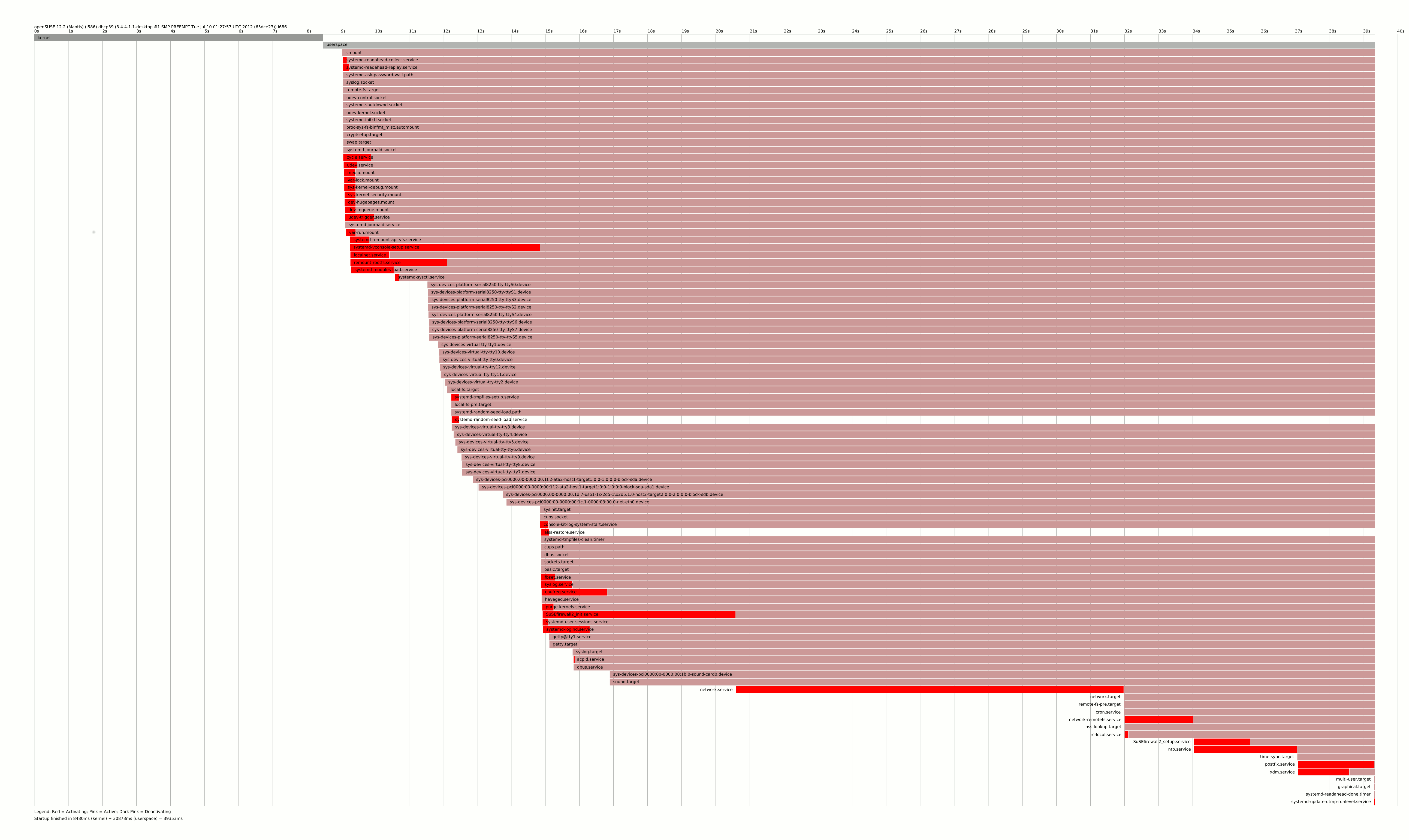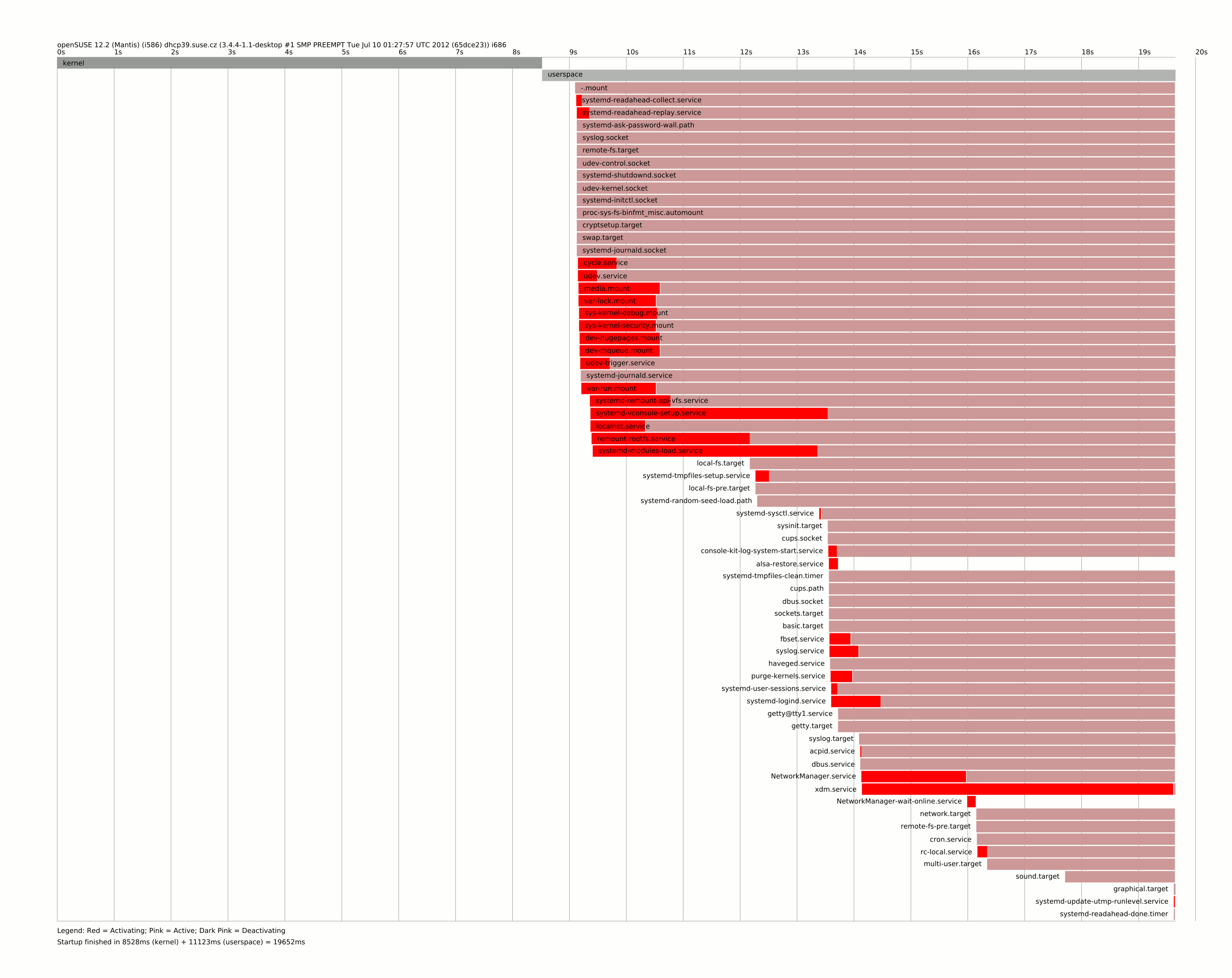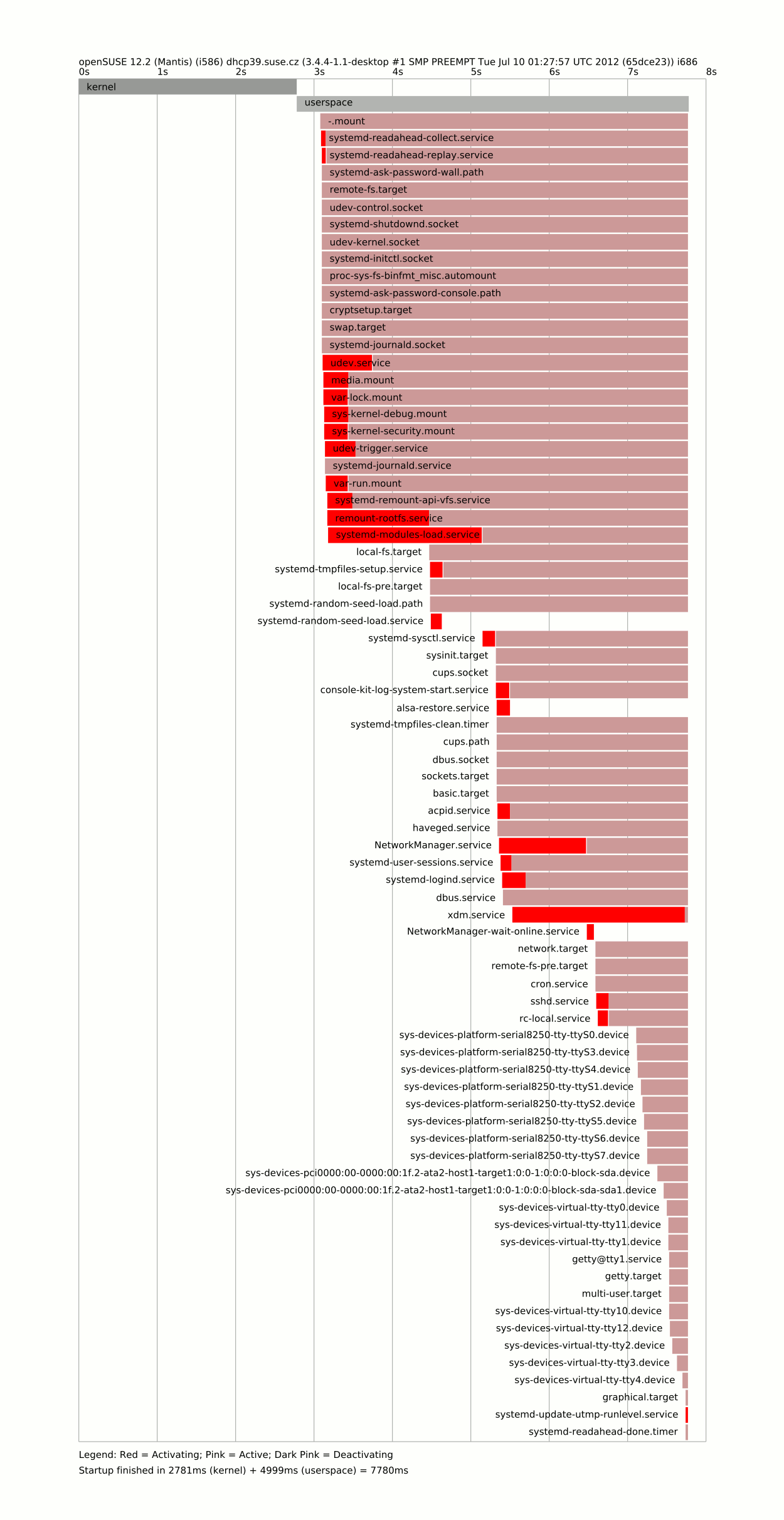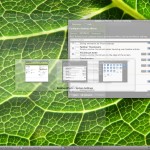Thanks to the fantastic work by openSUSE Arm team, you can get full desktop on your armv7l powered phone or tablet(any recent dual core devices should work), without the need for repartition, formats, bootloader hacks or sacrificing your nicely running latest android on it. What you need is rooted device with busybox, Android VNC and terminal app installed and 4GB free space on sdcard(internal or external).
(more…)
Archive for the ‘Base System’ Category
openSUSE on phones/tablets
February 20th, 2013 by Jigish GohilATI/AMD catalyst fglrx legacy updated to new 13.1 version
January 24th, 2013 by Bruno FriedmannProprietary AMD/ATI Catalyst fglrx legacy 13.1 (8.97.100.7-1) rpm released
Notice
This release concern only radeon HD2xxx to HD4xxx owners
The published Catalyst fglrx rpm version support openSUSE version from 11.4 to 12.3 (new repository) and also Tumbleweed (thus also kernel 3.8x series).
For testing with the next openSUSE 12.3 just use the new openSUSE_12.3 repo
Feedback
Sebastian Siebert will publish an article today, and he’s looking for feedback about the patches included to make it working on 12.3, so don’t hesitate to get in touch with him
Comments:
As I didn’t have a gpu card of this series, I can’t test it before publishing the rpm like for normal fglrx. If someone has a spare hd2xxx or hd4xxx, Could he(she) contact me?
Have fun!
Proprietary AMD/ATI Catalyst fglrx 13.1 (9.012-1) rpm released
January 21st, 2013 by Bruno FriedmannProprietary AMD/ATI Catalyst fglrx 13.1 (9.012-1) rpm released
Sorry this article should have been published Saturday, but some trouble (error in a updated module) locked me outside of lizards), Thanks to Matthew to have fix it in the meantime
Notice
This release concern only owners of radeon HD5xxx or above.
For older gpu, the fglrx-legacy is still 12.6, and thus didn’t work with Kernel 3.6, 3.7, 3.8
SDB:AMD_fgrlx_legacy
Beware of that fact, and prefer the free open-source radeon driver which came out of the box from your openSUSE distribution.
Release note about 13.1
This Catalyst fglrx version support openSUSE version from 11.4 to 12.3 (new repository) and also Tumbleweed (thus also kernel 3.8x series).
For testing with the next openSUSE 12.3 just use the new openSUSE_12.3 repo
Release Note
A release note is available on AMD website
Fixed issues
[368958]: Driver release version is added to GL_VERSION
[367282]: Bblank VGA display after resume from suspend
[367245]: X crash for AMD PowerXpress™ A+I High-Performance mode on Ubuntu 12.10
[366820] Performance of Valve Linux games
[366805]: Segmentation fault when exit QtOpenGL applications such as AMD CodeXL
[366425]: Xserver getting exit upon resume from suspend on RHEL 5.8
[364107]: VariBright not working when change AMD PowerPlay™ settings in AMD Catalust Control Center:LE
[363638]: VariBright doesn’t work after resume from suspend on “Trinity” platform
[350759]: Flickering cursor when run some full-screen OpenGL games with CrossFire enabled
[347895]: OpenGL performance on “Southern Islands” ASICs
[344996]: 16 re-frames doesn’t work for H.264 @Level 5.1
[337240]: Corruption when resize the Konsole window
[304016]: One display goes black after changing from multi-display desktop from single independent
Sebastien Siebert making script
Sebastian Siebert post about 13.1
If you have any problems with the driver, don’t be afraid to report to Sebastian (German and English bugreports are gladly accepted).
he will try, as far as I am able to reproduce the bug. Together with the necessary system information, he will go directly to the right place at AMD to have the bug fixed in the next driver release.
Thank you very much, Sebastian.
See below what to do in case of troubles.
Or you can also ping him on irc (freespacer)
(more…)
Making different openSUSE liveCDs
December 29th, 2012 by bmwiedemannIn my last post I explored the various liveCD creation methods out there, and I really wanted to try one of the others for openSUSE.
Thus I did so today in less than two hours.
I used Debian’s liveCD as basis and replaced the userspace with an openSUSE-11.4-GNOME-liveCD one (later ones likely do not work as systemd is not compatible with old 2.6.32 kernels).
And it worked like a charm. If you want to try it yourself, you need openSUSE and an empty directory with 5GB free space. Then you do as root:
zypper -n in clicfs squashfs cdrkit-cdrtools-compat
wget -O Makefile http://lsmod.de/bootcd/Makefile.aufslive.11.4
make
This will take a while to download the two isos and then at least another 3 minutes for the processing.
If that seems too hard for you, you can just download the finished iso and try it with qemu-kvm -m 1000 -cdrom xxx.iso
Do not let the debian logo in the bootloader confuse you. Just press enter there.
When running in KVM from RAM, this boots up in 18 seconds, while the original iso took 33 (measured from pressing enter in bootloader to the time the CPU load goes down). However, with physical media the difference will be less pronounced. Some of the difference comes from the faster gzip decompression. Unfortunately debian’s kernel does not support squashfs-xz, so I could not try that.
I hope in the future, we will have aufs patches in our normal openSUSE kernels and add an aufs-live mode to kiwi. That would help with the problems we hit with clicfs when memory runs out (and it can not be freed by deleting files either).
LiveCDs
December 27th, 2012 by bmwiedemannAs few of you might know, I made my own SUSE-based LiveCDs a while ago, using (like Knoppix) cloop compression with iso9660 and my own kernel code for file-based overlay to make it writeable. You might be amazed at how fast it runs in KVM. However, the kernel part has bit-rotten and there are other techniques out there today, so I took a look around at how others do their LiveCDs.
But first some broader overview. To make a LiveCD, the biggest problem is that CDs are not writeable (and even modern Flash devices do not want to be written too much). Embedded devices using flash had the same problem. Various approaches have been used in the past to solve this:
- adapt all software to write into ram-disks e.g. by having symlinks (hard to create and maintain)
- load all software into RAM (only for small distributions)
- use file-based overlaying such as unionfs or aufs to have software write into RAM (lsof, pwd, and hardlinks can be tricky)
- use block-based overlaying (problem: can not easily free disk space again)
Also compression is used to fit more onto a CD. And interestingly, this usually also speeds up booting because it is faster to read 10MB off a CD and decompress it into the original 30MB than to read 30MB from such a slow medium.
Now, to the distributions.
- openSUSE has the classic DVD installs that use special installation-images and run in RAM and then there are the real LiveCDs that are created by our kiwi tool, use block-based overlaying and LZMA compression of a ext3 by means of our FUSE-based clicfs.
- All of the other distributions use squashfs for compression. Mageia employs dracut for initrd and unionfs for file-based overlaying
- Debian uses aufs for file-based overlaying
- Ubuntu uses overlayfs for file-based overlaying
- Fedora uses an ext4 filesystem image contained in a squashfs with dm-snapshot for block-based overlaying, thus being most similar to openSUSE
I also spent some time benchmarking (on my AMD A10-5800K) the various technologies with a simple script using Debians uncompressed rootfs of 495132 KiB as data.
squashfs supports three different compression methods: lzo, gzip and xz (aka LZMA).
- squashfs-lzo: size:220992 compression:11.1MB/s decompression:134.4MB/s
- squashfs-gzip: size:203328 compression:15.5MB/s decompression:88.9MB/s
- squashfs-xz: size:176064 compression:6.5MB/s decompression:22.5MB/s
- cloop(gzip): size:213348 compression:16.2MB/s decompression:49.6MB/s
- clicfs(xz): size:185300 compression:16.7MB/s decompression:18.2MB/s
This has some surprises: even when using the same compression method, sizes can differ by 5% and speed can differ even more.
If you want to compare numbers on your system, memory throughput is also interesting:
# dd if=/dev/zero of=/dev/null bs=1M count=100000
104857600000 bytes (105 GB) copied, 12.4499 s, 8.4 GB/s
Overall, clicfs is performing OK, considering that it already takes care of the overlaying, but for my own LiveCD I would prefer Debian’s method and I am wondering how it would work.
Run X2go thin-client using kiwi-ltsp
September 27th, 2012 by Jigish GohilRecently, came across x2go packages maintained by Jan Engelhardt for openSUSE and other distributions on open build service. As openSUSE Education Li-f-e has great LTSP integration thanks to KIWI-LTSP, I decided to check out how x2go can fit in with this existing thin-client computing solution.
“x2go is an open (GPL/AGPL) source “server based computing” project. Combining the advantages of existing systems it features ease of use, performance and scalability. x2go provides you with access to your desktop – from within your own network and via the internet. x2go is not limited to particular hardware, it supports a variety of devices and architectures.” -from their website.
Some of the features/benefits of x2go that are not available on LTSP are:
* Remote login from within local lan and internet from any OS
* Session persistence, you can disconnect session from one client and continue where you left off from any other client
* Low bandwidth usage
* Session sharing with other users
(more…)
How kiwi can help to cleanup your system
September 25th, 2012 by Marcus SchaeferAfter some iterations of updating the system with zypper dup or yast and some years of service with the system you will find out that there is a lot of dust which is obsolete or has been forgotten. Recently I had the problem that I need to move my 32bit system to a 64bit system and thus the way to go was to migrate the running system into an image description, build a 64bit image from it and install that on the 64bit machine. But the most important part was to cleanup the running system and find out what it really contains. The report kiwi migrate created here was helpful and so I think it might be helpful for others too. Just call:
kiwi –migrate mySystem
It will end up with some data below /tmp/mySystem which of course can be removed at any time without any risk. Most interesting is the html report generated which you can view with any browser. So far kiwi collects the following information:
- kernel version and kernel specific kmp packages
- hardware dependent packages
- installed gem packages
- repository checkouts
- rpm packages installed multiple times
- rpm packages which could not be found according to the current repo setup including version and repo information
- tree of modified files, packaged but changed
- tree of custom files, those which doesn’t belong to any package or other part of the bullet list
basically the use case of kiwi migrate is to migrate the running system into an appliance description but I’m not there yet. There is still room for improvement but I think it still can help to cleanup the system and to see what is installed on the system and not managed by a package manager
I have tested this since openSUSE 11.4
Remember to have fun 🙂
live-fat-stick
September 13th, 2012 by Jigish GohilSo you got a bunch of different openSUSE 12.2 live isos downloaded, to test them on a real machine you have to either burn them to CD/DVD or create live USB stick. Creating CD/DVD is a total waste after booting it once or twice. Creating bootable USB stick is a better thing to do, however openSUSE Hybrid iso creates USB stick that is not usable for any other purpose and the remaining space is locked till you make another partition, and even then the partition is not available on windows(tm).
AMD/ATI Catalyst fglrx & fglrx legacy news
July 31st, 2012 by Bruno FriedmannAMD/ATI Catalyst fglrx & fglrx legacy news
Explanations of Hell
During June, with the version 12.6 (8.980) AMD decide to drop support for legacy radeon chipset from its main fglrx package and drop the time based release cycle.
So now if you are the owner of radeon hd2xxx to hd4xxx chipset family you will have to use the -legacy- version of fglrx, and
consequently if you have a radeon hd5xxx or above, you have to use the standard fglrx driver.
Then start the hell. After getting the new developed script from Sebastian Siebert, I will be able to offer the two versions. Unfortunately the two drivers can’t coexist in the same repository, the legacy drivers wants to install in place of normal one. This imply another limitation, you can’t have two graphics cards with differents generation at the same time.
So I decide to clarify (is that possible? :-)) the mess, and split the drivers in two distinct repositories. I use that excuse to also change the ati (deprecated brand name) and use new names: amd-fglx and amd-fglrx-legacy.
Don’t worry about your exiting installation, I will provide a symlink during the next 6 months at least for the old repositories. But read carefully the rest of the story, and apply any changes needed to your installation to be sure to continue to safely use the right driver.
I also decided to remove any version below 12.4 (8.961) in all repositories, except for openSUSE 11.2.
I need your help to spread those informations around the internet, and be sure that every user that need this driver know where and how to use it right. Tweet FbLike G+ forums, mailing list, private blogs Go now!
Release note about 12.6 and legacy 8.97.100
Both version can handle kernel 3.4 and 3.5
Sebastian Siebert warn us about the state of legacy
These cards with the unofficial support of openSUSE 12.2 can run in the ideal case, just under 2 more years. However, one must keep in mind that the legacy driver is looked after, while AMD continues and eliminates errors found, but will not add new features. This can mean, among other things, that the next version of GNOME or KDE will not run with its 3D effects, especially when used with a desktop or Tumbleweed extra repository.
If you have any comments, be do on his blog. Don’t be shy, you can leave there the result of test in english too 😀
or ask in forums, irc and ping freespacer.
See below what to do in case of troubles.
12.2 Factory rpms are presently available, use at your own risk, and report bugs in forums and Sebastian blogs.
Anyways, factory and 12.2 should keep their effort on debuging and testing widely the free radeon driver.
Optimizing a boot time, aka 2 second boot
July 26th, 2012 by Michal VyskocilDuring the hackweek, I have decided to take a look onto a boot process to realize, how fast can be boot of the system. This metric is considered as a not important, especially in a geek community. But I am sure that this is an important part of user experience. Following text is mean to share my investigations with you – but you should be aware what you are doing, since I have been focused on reducing the boot time as much as possible.
A bit of theory
Basically you have three possibilities how to make your boot fast.
- Start things in a parallel.
- Start things on demand.
- Start less things.
… root of all evil …
“Premature optimization is the root of all evil.”
And I will modestly extend Donald Knuth’s sentence, that the blind optimization as well. So if we have to optimize something, we have to know what to do. Fortunately systemd comes with an excellent tool called systemd-analyze, which show us our boot in several ways.
The simple run of command prints the time we spent in a boot and in which phase.
# systemd-analyze Startup finished in 8480ms (kernel) + 30873ms (userspace) = 39353ms
That was the default (minimal X system) 12.2 installation on my EEE 701 netbook, which is probably not suitable to work as nowadays cellsmarphone, because is pathetically slow. On the other hand is it a perfect playground, so let’s continue with an investigating.
The overall time is nice, but won’t help to know what’s going on. There are two more subcommands, blame and plot shows us more information about the boot. The first shows the services sorted by the start time. The ones boots so long are those we should kicked off as a first ones.
Let see what slow the boot down a most
$ systemd-analyze blame | head 11385ms network.service 5664ms SuSEfirewall2_init.service 5575ms systemd-vconsole-setup.service 3032ms ntp.service 2840ms remount-rootfs.service 2230ms postfix.service 2021ms network-remotefs.service 1925ms cpufreq.service 1661ms SuSEfirewall2_setup.service 1506ms xdm.service
And take look at the output of systemd-analyze plot command

You can see, that there is a long chain of SuSEfirewall2_init -> network -> network-remotefs -> SuSEfirewall2_setup tooks several dozen seconds to be finished. And nothing is wrong with that, but that is the server solution, not what I want to have on my tiny laptop.
Making a laptop boot twice more faster
So having the complex dependencies of several services in mind, I decided to mask some of them. Masking in systemd world means the service cannot be started using systemd, so it becomes invisible for it. I masked those
network.service– will be replaced by NetworkManager, which is more suitable for laptops usageSuSEfirewall2_initandSuSEfirewall2_setup– even if it’s a security feature, a risc for laptop, which is mostly offline and running onlysshdis pretty small.ntp.service,network-remotefs.service– those does not makes a sense on my laptoppostfix.service– I do not want to send emails via/usr/bin/sendmailcpufreq.service– it is even not supported by my CPU (grep rc.cpufreq /var/log/messages)
Do not forget to install NetworkManager and the applet and change the /etc/sysconfig/network/config and reboot.
Now we have
$ systemd-analyze Startup finished in 8528ms (kernel) + 11123ms (userspace) = 19652ms
Using an strace with systemd
Now we have a list of worse services
$ systemd-analyze blame | head -n 10 5476ms xdm.service 4172ms systemd-vconsole-setup.service 3950ms systemd-modules-load.service 2781ms remount-rootfs.service 1848ms NetworkManager.service 1439ms media.mount 1426ms systemd-remount-api-vfs.service 1419ms dev-hugepages.mount 1411ms dev-mqueue.mount 1371ms sys-kernel-debug.mount
and a proper boot chart

It shows us an another botleneck, which is the systemd-vconsole-setup.service, because it delay the sysinit.target, which is very early boot stage. In case like this, we can only use strace to know, what is taking too long. And debugging is pretty straightforward in systemd world. All we have to do is copy service file to /etc/systemd/system and change the ExecStart
ExecStart=/usr/bin/strace -f -tt -o /run/%N.strace /lib/systemd/systemd-vconsole-setup
and reboot. Then you will find the output in /run/systemd-vconsole-setup.strace with a timestamps. Looking there it’s obvious calling hwinfo --bios is extremely expensive in this stage. You can speedup the unit by setting the KBD_NUMLOCK to yes or no in /etc/sysconfig/keyboard, or you can try to mask it completely I did.
The next service needs to closer look was system-modules-load – then strace says that it spent 2(!) in init_module() for module microcode. I disabled it as well, even for CPUs needs it can’t be recommended.
Native systemd units
There is one tiny init script called purge-kernels, which starts for 300ms according blame. And in this particular case systemd alternative will be way more effective
$ cat /etc/systemd/system/purge-kernels.service [Unit] Description=Purge old kernels After=local_fs.target ConditionPathExists=/boot/do_pure_kernels [Service] Type=oneshot ExecStart=/sbin/purge-kernels
because systemd only do one stat on the file and do not run it at all, so this service disappears from the blame at all.
The kernel time
There is one interesting thing about kernel time – 8 seconds spent there seems to be a lot to me. Simple ls on /boot gave me a pointer
$ ls -lh /boot/vmlinuz-* /boot/initrd-* -rw-r--r-- 1 root root 14M Jul 24 11:03 /boot/initrd-3.4.4-1.1-desktop -rw-r--r-- 1 root root 4.7M Jul 10 15:48 /boot/vmlinuz-3.4.4-1.1-desktop
The initrd is huge, around three times bigger than kernel? So let’s try to find what caused that. Every package can add it’s own setup script into /lib/mkinitrd/scripts/ thus let ask rpm whose did that
$ rpm -qf /lib/mkinitrd/scripts/setup-* | sort -u cifs-utils-5.5-2.2.2.i586 cryptsetup-1.4.2-3.2.1.i586 device-mapper-1.02.63-26.1.1.i586 dmraid-1.0.0.rc16-18.2.1.i586 kpartx-0.4.9-3.1.1.i586 lvm2-2.02.84-26.1.1.i586 mdadm-3.2.5-3.3.2.i586 mkinitrd-2.7.0-62.2.1.i586 multipath-tools-0.4.9-3.1.1.i586 plymouth-scripts-0.8.5.1-1.3.1.noarch splashy-0.3.13-35.1.1.i586
So I went through a list and try to uninstall things I do not need
cifs-utils– if you do not have any windows disc to mount, you can remove, but no impact on initrd sizecryptsetup– this is a popular service for laptops, but I do not have any luks device, so let skip that. It removes a half of Yast as well, so I saved 18M of space, but a little in initrd.device-mapper,dmraid,kpartxandlvm2– cannot be easily removed as too much low-level stuff depends on itmdadm– no linux md devides, skip thatmkinitrd– removal can reduce initrd to zero, but we would need own kernelplymouth-scripts– who would need the “fancy” boot when booting so fast? – reducing initrd to 8.9Msplashy– the same – and reducing initrd to 6.6M
multipath-tools – no multipath device, let skip that
So the things intended to provide fancy boot actually bloats the system. Let’s measure the impact of those changes
$ systemd-analyze 2781ms (kernel) + 4999ms (userspace) = 7780ms

And that’s all folks …?
There are a lot of factors slowing our boot – reducing it to 8 seconds is not that bad. One have to go carefully through blame and plot output to see what delays his computer in start. I would say making NetworkManager default one at least when installing laptop pattern would be nice and simple change as well as continue on “systemdifization” of openSUSE.
There are few other tricks, which get us closer to the target time, but I’ll post them next day.


